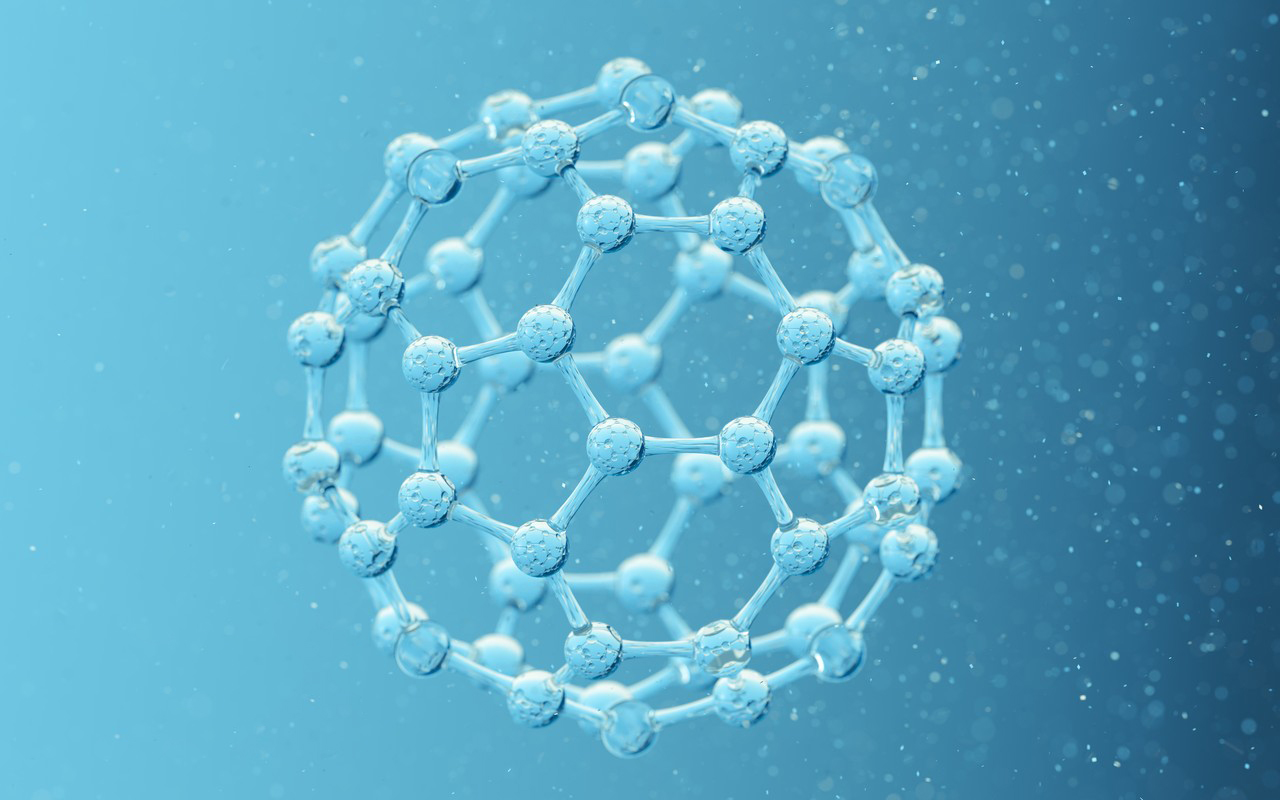Fullerene C60, also known as buckminsterfullerene or buckyball, is a unique and fascinating molecule composed of 60 carbon atoms arranged in a soccer ball-like structure. It has garnered significant interest due to its unusual properties and potential applications. Here are some of the pros and cons associated with Fullerene C60:

Pros of Fullerene C60:
- Structural Versatility: Fullerene C60 has a hollow, cage-like structure that allows it to encapsulate other molecules or atoms within its interior. This property can be harnessed for drug delivery, catalysis, and other applications where controlled environments are needed.
- Exceptional Strength: The carbon-carbon bonds in C60 are very strong, contributing to its structural stability. This property makes it potentially useful in materials science for reinforcing composites and enhancing material strength.
- Unique Electronic Properties: Fullerene C60 exhibits interesting electronic properties, making it useful in electronic devices, photovoltaics, and conductive materials. It can accept and donate electrons, making it a good candidate for organic electronics.
- Potential Medical Applications: Research has shown that certain forms of fullerene C60 possess antioxidant properties, which could have potential benefits in combating oxidative stress and reducing cellular damage. However, research in this area is still ongoing, and the health implications are not fully understood.
- Photodynamic Therapy: Fullerene C60 has been explored for its potential in photodynamic therapy, a medical treatment that utilizes light to activate a photosensitizing agent, which then generates reactive oxygen species to target and destroy cancer cells.
Cons of Fullerene C60:
- Toxicity and Environmental Concerns: The potential toxicity of fullerene C60 is a major concern. Some studies have suggested that certain forms of C60 could be harmful to living organisms and the environment. However, toxicity can vary depending on factors like size, surface modification, and dosage.
- Limited Solubility: Pure C60 is sparingly soluble in many common solvents, which can limit its practical applications. Efforts have been made to modify the molecule’s surface to improve solubility, but this can alter its properties.
- Synthesis Challenges: The synthesis of pure C60 can be complex and involve high temperatures and pressures. Controlling the process to produce specific forms of C60 can be challenging, and purification methods are required to remove unwanted byproducts.
- High Production Costs: The complex synthesis process and the challenges of producing pure C60 contribute to its high production costs, which can hinder its widespread use in various applications.
- Limited Commercial Applications: While there are several potential applications for fullerene C60, its practical commercial applications have been limited due to the challenges mentioned above, as well as competition from other advanced materials.
- Regulatory Hurdles: The potential health and environmental risks associated with fullerene C60 have led to regulatory hurdles, particularly in fields like medicine and consumer products. This can slow down its development and commercialization.

In summary, fullerene C60 is a molecule with unique properties that hold promise for various applications, including materials science, electronics, medicine, and more. However, its potential toxicity, challenges in synthesis and production, and regulatory concerns are important factors to consider when exploring its applications. Ongoing research is crucial to fully understand its benefits and risks.
